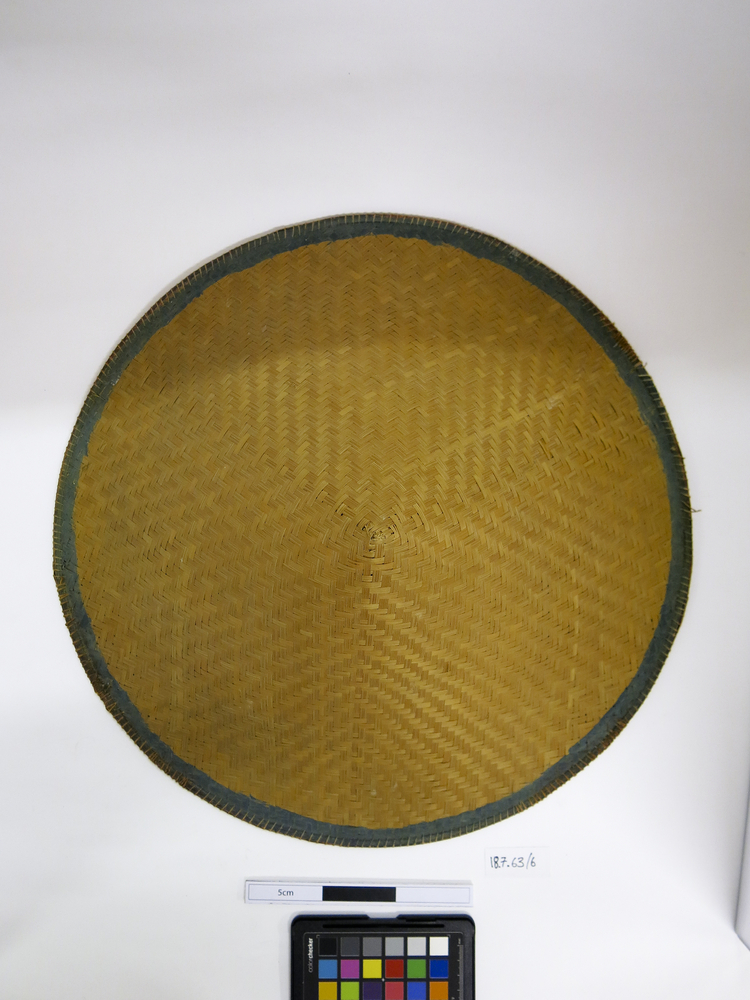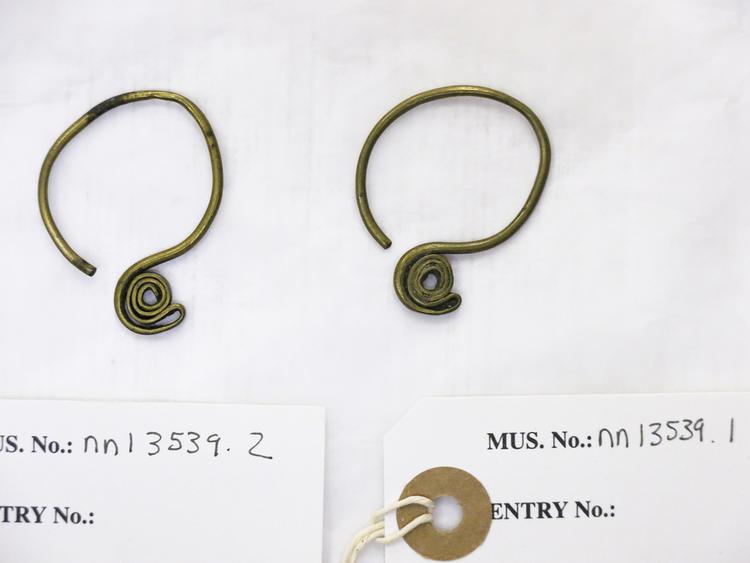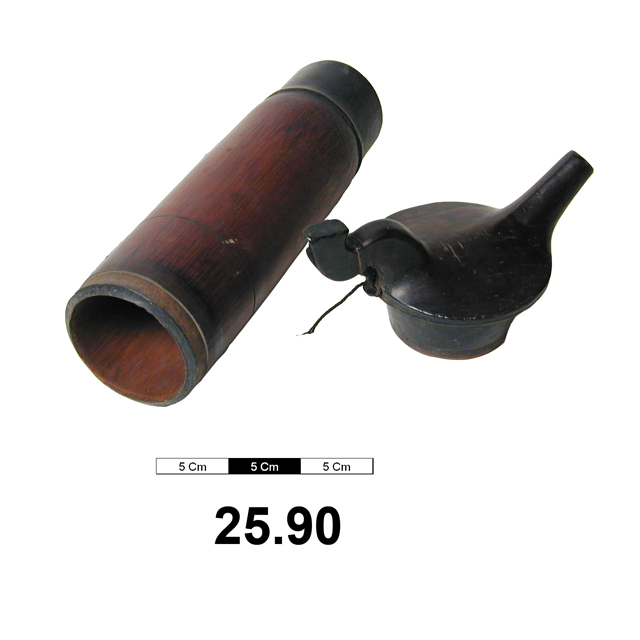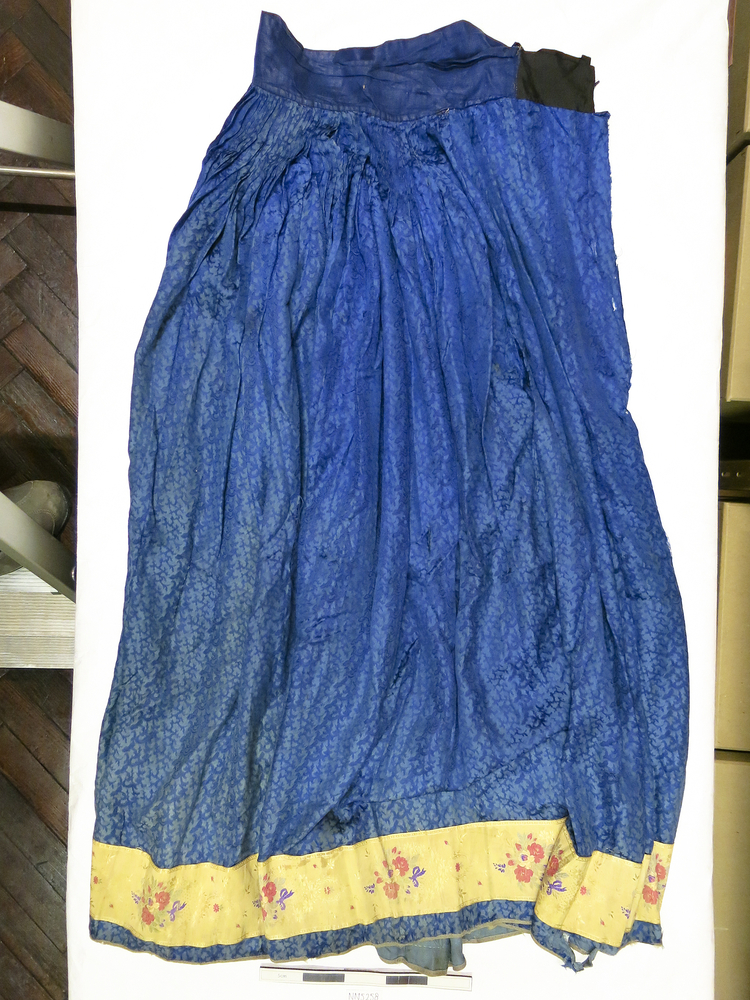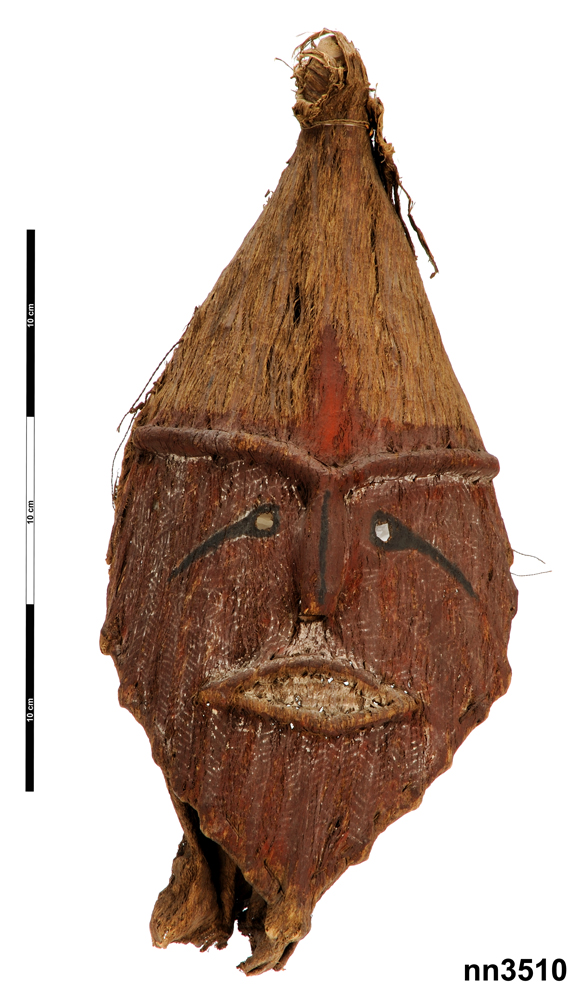
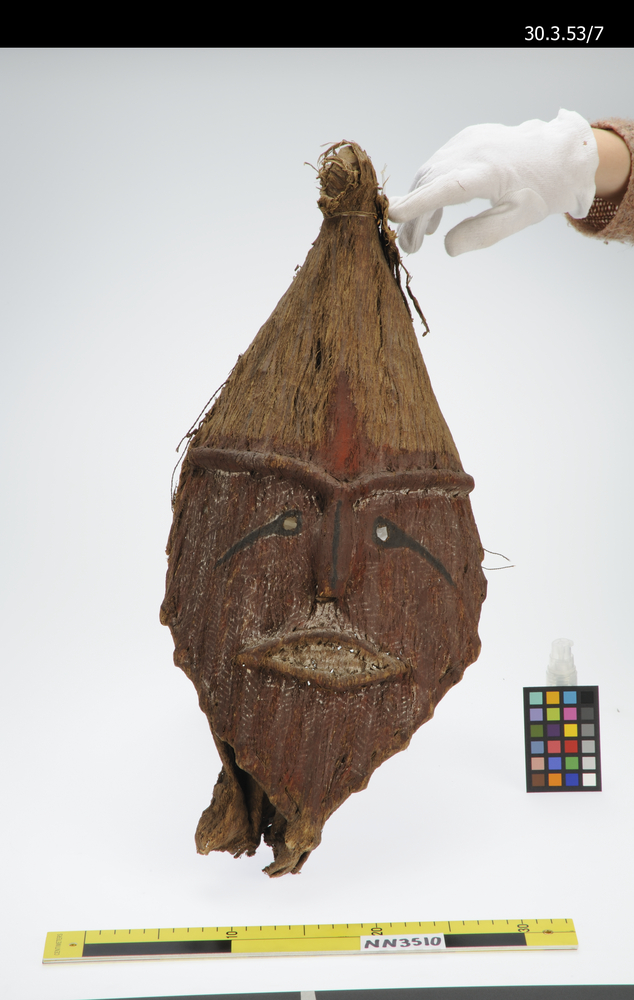
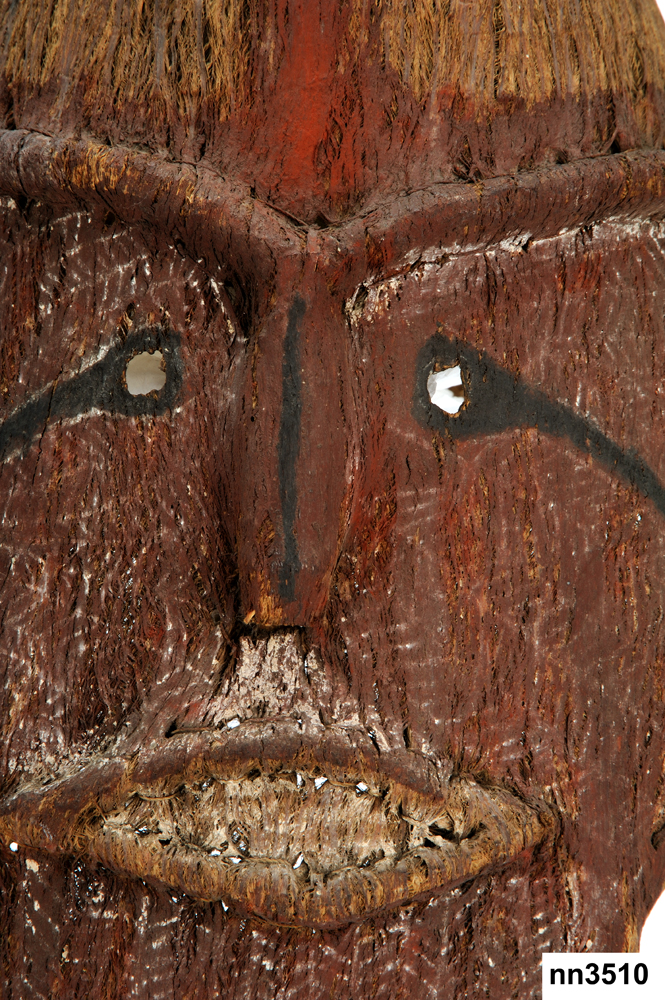
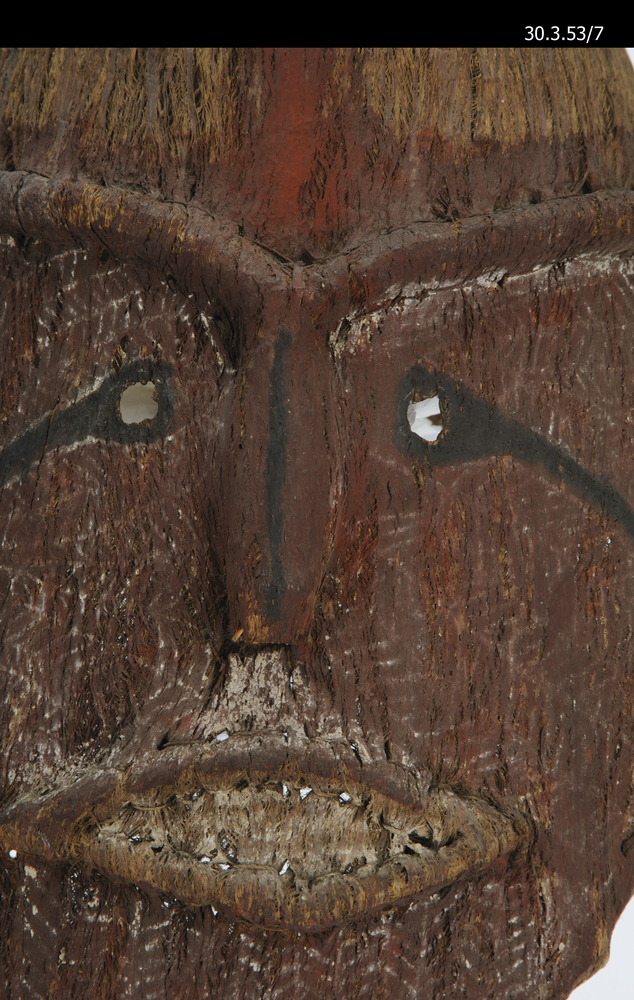
Bifacial mask of painted barkcloth; bamboo, barkcloth, pigment. Northern Vanuatu, late 19th century.
Bifacial Mask of Painted Barkcloth, Northern Vanuatu, Eastern Melanesia Masks were depictions of ceremonial or religious figures, and were used by dancers to embody those figures during religious rituals. Faces display the presence of ancestral mana (supernatural effectiveness) within an object, and doubled faces even more so. In northern Vanuatu, such bifacial character masks embodied the grades of particular ranks within the sukwe grade-rank system that both men and women passed through during their lifetimes. This mask was probably made and danced as part of the work an individual undertook to gain their sukwe grade initiation. The mask is skilfully made on a conical scaffold of split and lashed bamboo, over which is wrapped and bound a layer of coarse barkcloth. This has then been painted with a finely executed decorative design. Little was ever recorded of the historical use of the many kinds of mask once made and used in Vanuatu, and following the population’s Christian conversion in the early 20th Century, it is unlikely that much ever will. Bamboo, barkcloth, pigment. Late 19th Century. Purchased for the Museum in 1956 at the Berkeley Gallery.



